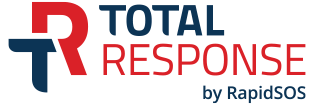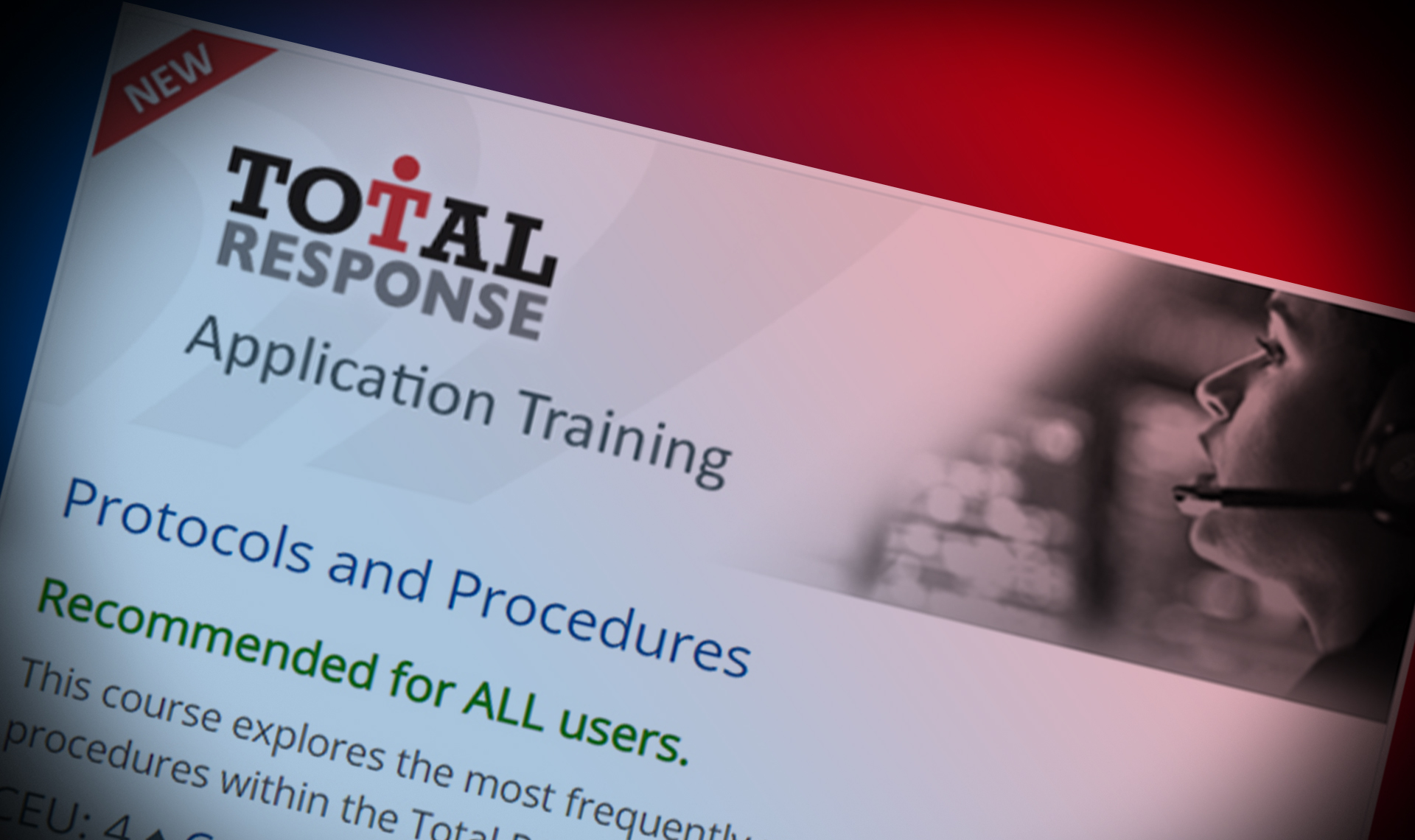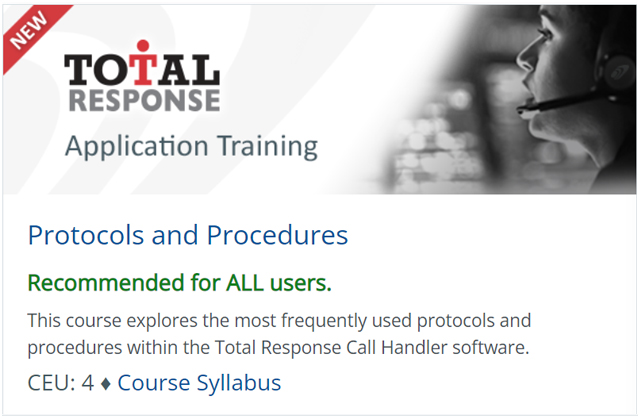The "Hows" and "Whys" of Total Response
Telecommunicators can respond more effectively when they understand both the “hows” and “whys” about the tools they use. The “hows” are the mechanics; which menu or button do you click to accomplish a task? The “whys” describe the intended use of a feature and help guide you in deciding when a specific feature, such as a protocol or procedure, should be invoked.
Last year, PowerPhone introduced the Call Handler course within our Total Response Application Training category. This course explains “how” to navigate and use Total Response. It reviews terminology and explores menu options, navigation features and answer details.
The Newest Course in Your Site Licensed Training Portfolio
Our new Protocols and Procedures course is the follow-up course to Call handler and it explains the “why” behind the most common protocols and procedures. Knowing how to access a protocol or procedure is just the beginning of your learning. To take full advantage of the power within Total Response, you should understand why a particular protocol or procedure exists and under which situations it is most helpful.
For instance, why choose the domestic disturbance protocol instead of the assault protocol? While these protocols have many similarities, each was designed to address the unique characteristics of a particular call type. The questions you ask and the instructions you offer will have subtle but important variations that can impact the quality of the caller’s response and their acceptance of your instructions. Both protocols could guide you through the call, but choosing the more appropriate protocol could provide a higher standard of care to the caller and responders.
This course provides a detailed examination of the following protocols and procedures within Total Response.
Protocols
- Assault
- Bleeding-Laceration
- Chest pain
- Domestic Disturbance
- Mental Health
- Stroke-CVA
- Structure Fire
Procedures
- Choking
- Infectious Diseases
- Naloxone
- Submerged Vehicle
Training Any Time. Anywhere.
The combination of the Call Handler and Protocols and Procedures courses prepares telecommunicators to use Total Response with confidence and efficiency. Both courses are structured around short, targeted modules that explore a single topic. This design allows students to revisit specific sections of a course at any time to refresh their understanding or develop new skills. And as a Site Licensed Training customer, this course, as well as our complete portfolio of online, self-paced training, is accessible at no additional cost and is available to all staff whenever they need training. Login to the training portal today to explore the Protocols and Procedures course.
Haven’t enrolled in Site Licensed Training yet? Learn more about it here and reach out to us to see it in action.

About the Author
Jim Murtagh is the Training Manager for PowerPhone and has experience in both the public and private educational sectors. His formal education in Instructional Technology fostered his passion for developing e-Learning content.










